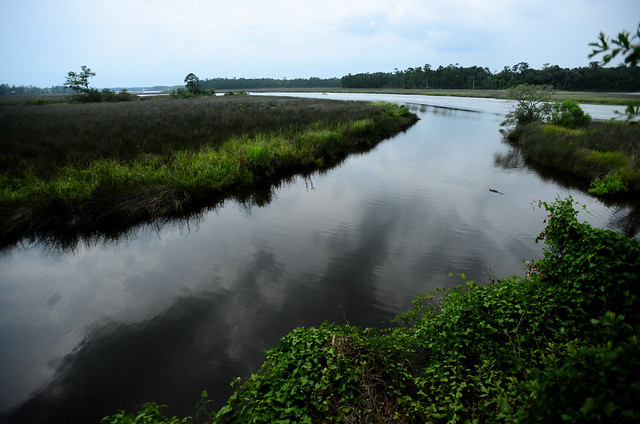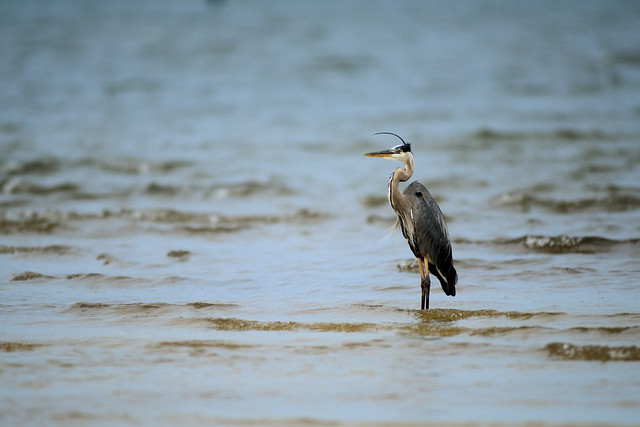Today marks 10 years since the Deepwater Horizon oil spill. USDA, through its Natural Resources Conservation Service (NRCS) and U.S. Forest Service, worked alongside other federal agencies to respond to this disaster and supported the Gulf of Mexico region in its prevention, preparedness and restoration efforts.

From coral reefs and hyper-saline lagoons to emergent wetlands and vast sea grass meadows, the Gulf of Mexico hosts a diverse array of habitat and at-risk wildlife species, such as the Louisiana black bear. Its 5 million acres of coastal wetlands provide critical stopover habitat for hundreds of migratory waterfowl species and neo-tropical songbirds each year. Additionally, the Gulf’s ecosystem is a vital food source, producing over 1.3 billion pounds of seafood annually. The health of this ecosystem is not only essential to the local community but to the entire nation.
Our nation’s agricultural producers have played a key role in helping the recovery in the Gulf of Mexico region, making conservation improvements across Texas, Louisiana, Mississippi, Alabama and Florida over the last 10 years.
The land area of the Gulf’s five states encompasses more than 290 million acres. Agricultural land and privately-owned forestland account for 86 percent of these vital working lands. Accordingly, agricultural and private forest land management contributes significant ecological benefits to the Gulf of Mexico, requiring a unique working relationship among USDA, state land management agencies and landowners. As a result of the landscape’s makeup, the Gulf ecosystems will be determined largely by efforts to manage these private lands.
USDA is working with governments and entities at the local, state and federal levels to improve the Gulf ecosystem. Following the oil spill, USDA has served on the Natural Resource Damage Assessment Trustee Council and the Gulf Coast Ecosystem Restoration Council, working collaboratively with other governments and entities on strategies to aid restoration of this ecosystem. Investing more than $242 million over the last six years alone, the Gulf Coast Ecosystem Restoration Partnership has restored, enhanced or protected over 260,000 acres in seven priority landscapes across the Gulf states, over half of which are wetlands.
Taking a proactive approach after the 2010 oil spill, NRCS launched the Gulf of Mexico Initiative (GoMI), initially focusing on targeted watersheds. GoMI worked hand-in-hand with other NRCS landscape-level conservation efforts, including the former Migratory Bird Habitat Initiative, which was launched just weeks following the spill and ultimately created 470,000 acres of additional habitat for migrating shorebirds and waterfowl affected by the spill. These efforts are continued through the National Water Quality Initiative and the Mississippi River Basin Healthy Watersheds Initiative (MRBI).
From 2010 to 2018, $288 million was obligated for MRBI project contracts through the Environmental Quality Incentives Program, providing treatment on over 1.37 million acres. These targeted investments have increased the adoption of critical water-quality conservation practices by over 30 percent. Additionally, NRCS renewed its GoMI efforts in 2016, releasing a three-year strategy that directed $328 million to help producers make improvements to 3.2 million acres in the five Gulf states.
NRCS continues to build on its investment, prioritizing the protection of sensitive lands and wetlands through easements, integrating conservation practices in watersheds to improve water quality, and to enhance wildlife habitat on working lands. The Forest Service has engaged in Gulf restoration planning efforts that address water quality and wildlife habitat resource concerns on federal, state and private lands. The Forest Service has also partnered with state forestry agencies and universities to develop a region-wide forest management strategy.
For nearly a century, NRCS and Forest Service programs have been highly focused on working with private landowners. USDA’s efforts target the significant opportunities to promote landscape-scale conservation programs that help these landowners invest in science-based conservation practices. USDA programs, such as the Gulf Coast Conservation Reserve Program, have been deployed to protect and restore critical wildlife habitat and improve water quality through the development of plans supporting wildlife habitat, conservation and forest management in the Gulf states.
Utilizing a voluntary approach, USDA seeks to generate lasting ecosystem improvements by working closely with engaged landowners to maintain healthy watersheds, which depend on healthy agricultural and private forestland, and to achieve success through shared stewardship.

What we learned from the Deepwater Horizon Spill will help NRCS and the Forest Service better respond to future disasters with prevention, preparedness and restoration efforts. For example, while a much different challenge, in 2019, NRCS was able to deploy cover crop signups to help farmers with flooded fields restore soil health and tame soil erosion. Additionally, lessons learned on conserving natural resources in the Gulf region have been applied to other watersheds and regions.
By launching landscape-scale conservation, putting boots on the ground and working with diverse partnerships, USDA continues the important work of partnering with farmers, ranchers and private forest landowners to improve the health of this critical ecosystem.
Bill Northey is USDA’s Under Secretary for Farm Production and Conservation, which oversees conservation programs administered by the Natural Resources Conservation Service and the Farm Service Agency. Jim Hubbard is USDA’s Under Secretary for Natural Resources and Environment, which oversees the Forest Service.



